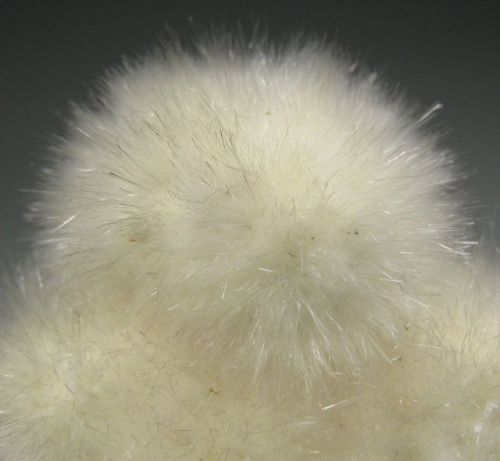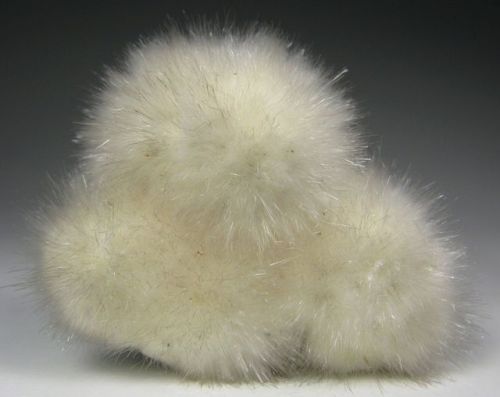Atpvts

Atpvts
More Posts from Hannahhaifisch and Others


Fuzzy Okenite - Jalgaon, India

cube

Researchers discover that chaos makes carbon materials lighter and stronger
In the quest for more efficient vehicles, engineers are using harder and lower-density carbon materials, such as carbon fibers, which can be manufactured sustainably by “baking” naturally occurring soft hydrocarbons in the absence of oxygen. However, the optimal “baking” temperature for these hardened, charcoal-like carbon materials remained a mystery since the 1950s when British scientist Rosalind Franklin, who is perhaps better known for providing critical evidence of DNA’s double helix structure, discovered how the carbon atoms in sugar, coal, and similar hydrocarbons, react to temperatures approaching 3,000 degrees Celsius (5,432 degrees Fahrenheit) in oxygen-free processing. Confusion over whether disorder makes these graphite-like materials stronger, or weaker, prevented identifying the ideal “baking” temperature for more than 40 years.
Fewer, more chaotically arranged carbon atoms produce higher-strength materials, MIT researchers report in the journal Carbon. They find a tangible link between the random ordering of carbon atoms within a phenol-formaldehyde resin, which was “baked” at high temperatures, and the strength and density of the resulting graphite-like carbon material. Phenol-formaldehyde resin is a hydrocarbon commonly known as “SU-8” in the electronics industry. Additionally, by comparing the performance of the “baked” carbon material, the MIT researchers identified a “sweet spot” manufacturing temperature: 1,000 C (1,832 F).
Read more.


Mutation by Ben Butler 30″ x 32″ x 16″, cedar, 2006
Heartwood on Tumblr
Sand and water make a remarkable team when it comes to building. But the substrate – the surface you build on – makes a big difference as well. Take a syringe of wet sand and drip it onto a waterproof surface (bottom right), and you’ll get a wet heap that flows like a viscous liquid. Drop the same wet sand onto a surface covered in dry sand (bottom left), and the drops pile up into a tower. Watch the sand drop tower closely, and you’ll see how new drops first glisten with moisture and then lose their shine. The excess water in each drop is being drawn downward and into the surrounding sand through capillary action. This lets the sand grains settle against one another instead of sliding past, giving the sand pile the strength to hold its weight upright. (Video and image credit: amàco et al.)





Adjustable Wood Lamp ‘Goldberg’
The adjustable ‘Goldberg’ lamp by Atelier Akerboom is a handmade wooden lamp. By adjusting the 31 openings of the lamp you can control how much light it gives out in any direction. The lamp can be used as a hanging (pendant) lamp or as table or floor lamp. The lamp is available in different colors (see information sheet) and in two sizes (30cm or 50cm diameter).
This special design is named after Michael Goldberg (1902-1990) who described the Goldberg polyhedron – a convex polyhedron made from hexagons and pentagons – first in 1937.
https://www.etsy.com/de/listing/267492092/adjustable-lamp-goldberg?ref=shop_home_active_2
-
 illuzionaughti reblogged this · 4 years ago
illuzionaughti reblogged this · 4 years ago -
 illuzionaughti liked this · 4 years ago
illuzionaughti liked this · 4 years ago -
 missrupy liked this · 4 years ago
missrupy liked this · 4 years ago -
 brieflyinstantruins liked this · 4 years ago
brieflyinstantruins liked this · 4 years ago -
 lovesixthsense reblogged this · 4 years ago
lovesixthsense reblogged this · 4 years ago -
 lovesixthsense liked this · 4 years ago
lovesixthsense liked this · 4 years ago -
 natanielshpere liked this · 5 years ago
natanielshpere liked this · 5 years ago -
 fragrance777 liked this · 6 years ago
fragrance777 liked this · 6 years ago -
 photoniclabs liked this · 8 years ago
photoniclabs liked this · 8 years ago -
 hannahhaifisch reblogged this · 8 years ago
hannahhaifisch reblogged this · 8 years ago -
 exoarchaeology liked this · 8 years ago
exoarchaeology liked this · 8 years ago -
 wingapo2 reblogged this · 8 years ago
wingapo2 reblogged this · 8 years ago -
 proxima161 liked this · 8 years ago
proxima161 liked this · 8 years ago -
 luciacat93 liked this · 8 years ago
luciacat93 liked this · 8 years ago -
 deadive reblogged this · 8 years ago
deadive reblogged this · 8 years ago -
 swimmingwerewolffest reblogged this · 8 years ago
swimmingwerewolffest reblogged this · 8 years ago -
 swimmingwerewolffest liked this · 8 years ago
swimmingwerewolffest liked this · 8 years ago -
 raised-from-the-deaf reblogged this · 8 years ago
raised-from-the-deaf reblogged this · 8 years ago -
 raised-from-the-deaf liked this · 8 years ago
raised-from-the-deaf liked this · 8 years ago -
 peanutscratch reblogged this · 8 years ago
peanutscratch reblogged this · 8 years ago -
 peanutscratch liked this · 8 years ago
peanutscratch liked this · 8 years ago -
 bunnyissleepyy liked this · 8 years ago
bunnyissleepyy liked this · 8 years ago -
 poemforeveryonessoul liked this · 8 years ago
poemforeveryonessoul liked this · 8 years ago -
 200101s liked this · 8 years ago
200101s liked this · 8 years ago -
 hannahhaifisch liked this · 8 years ago
hannahhaifisch liked this · 8 years ago -
 sammalneuvos reblogged this · 8 years ago
sammalneuvos reblogged this · 8 years ago -
 sammalneuvos liked this · 8 years ago
sammalneuvos liked this · 8 years ago -
 annoying-doggo-blog reblogged this · 8 years ago
annoying-doggo-blog reblogged this · 8 years ago -
 rain-lullaby liked this · 8 years ago
rain-lullaby liked this · 8 years ago -
 pasager liked this · 8 years ago
pasager liked this · 8 years ago -
 aj-has reblogged this · 8 years ago
aj-has reblogged this · 8 years ago -
 erazerlll reblogged this · 8 years ago
erazerlll reblogged this · 8 years ago -
 erazerlll liked this · 8 years ago
erazerlll liked this · 8 years ago -
 hashview reblogged this · 8 years ago
hashview reblogged this · 8 years ago -
 elevatedvibrations1111 liked this · 8 years ago
elevatedvibrations1111 liked this · 8 years ago -
 lightsout97 reblogged this · 8 years ago
lightsout97 reblogged this · 8 years ago -
 bxsic-lines reblogged this · 8 years ago
bxsic-lines reblogged this · 8 years ago